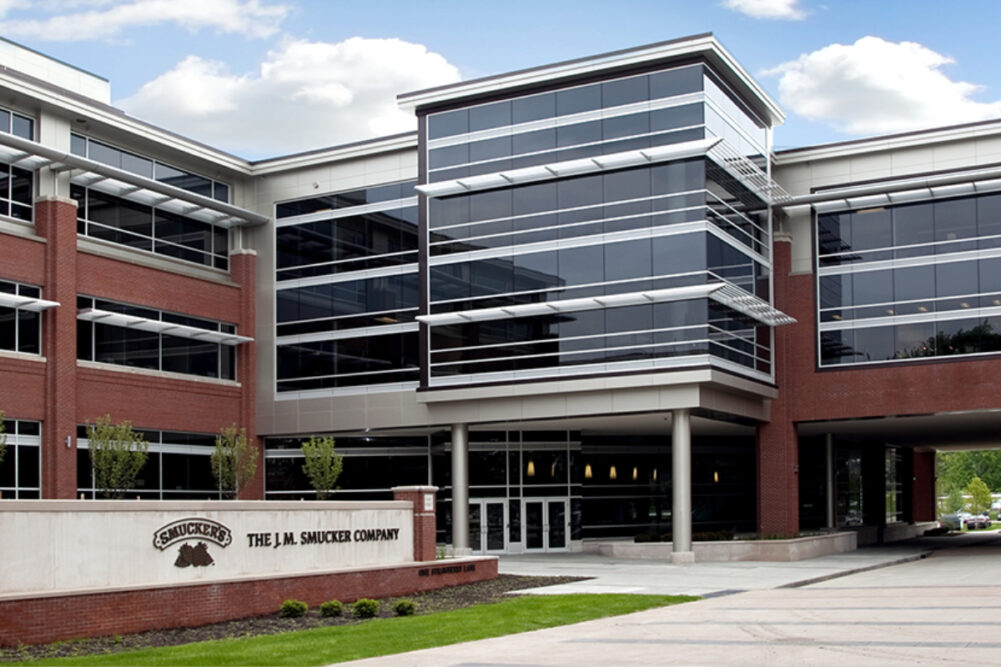ORRVILLE, OHIO – Sales associates for the J.M. Smucker Co. will soon be staying in their lanes as the company separates its sales teams between people and pet food. The new sales model will be deployed in the coming year, according to the company.
“These businesses compete in similarly sized categories, but they are very different,” said Geoff E. Tanner, chief marketing and commercial officer, Dec. 10 during a presentation at the company’s virtual Investor Day. “The category dynamics are different. The competitive landscape is different. What it takes to win is different. This new structure will support a greater focus on each category and business, providing greater category knowledge and expertise to our customers, and much tighter vertical integration within our operating segments.”
Mark T. Smucker, president and chief executive officer, said the shift is due to the “different dynamics” in each category and the way the company’s customers are structured today, often with unique category buyers.
“One of the things we’ve learned is that deep category expertise is critical to bringing category winning solutions to our retailers, and it’s also right for our brands,” said John P. Brase, chief operating officer. “And, so, this concept of more dedicated, deeper coverage in both the pet and human side of the business is really, I think, a breakthrough for our company, and really excited to bring that to market.”
The splitting of the sales teams was only one component of a three-prong strategy to create a more effective sales infrastructure. The other two components include better in-store execution and building improved e-commerce capabilities.
“We have not been ruthlessly focused on executing these (in-store) fundamentals,” Mr. Tanner said. “The objective is (to) optimize distribution, merchandising, pricing, shelving and in stocks in every single store.”
Aiding in improving in-store execution is a technology platform the company is calling Customer GPS, which will be fully deployed in 2021.
“Customer GPS sits on over one billion points of data and applies advanced analytics and AI (artificial intelligence) to first determine and then measure the optimal set of conditions for each customer, in some cases, down to the store level,” Mr. Tanner said. “For every customer, we will establish clear GPS targets, and we will use every lever at our disposal to execute against these targets. Customer GPS and this focus on fundamental execution at the store level is how we will further accelerate growth.”
Smucker’s e-commerce sales grew 57% during the first half of 2020 and now represent 11% of US sales, Mr. Tanner said. He said the digital sales channel accelerated six years in six weeks during the pandemic and management is focused on improving operations and solidifying gains.
“The good news is that capability investments we made pre-COVID prepared us for this acceleration, and they are supporting the delivery of our recent strong results,” he said.
The investments included building a digital shelf, creating unique pack sizes and increasing investments in technology and data capabilities. Future investments will include optimizing assortment, developing unique, more profitable e-commerce items that may include different versions of core stock-keeping units, reducing supply chain costs and testing direct shipping.
“It’s through a combination of these efforts that we’re confident we will increase the profitability of this channel while still driving growth,” Mr. Tanner said.
E-commerce is currently treated as a separate sales channel, but Mr. Brase said that may change in the future.
“Like many CPG companies, we’ve been building capability for several years across e-commerce, and I think it required a dedicated effort,” he said. “I think, over time, we’ll look to embed that back in the categories so we can develop the right category solutions for both our pure-play and click and collect customers … So, I think that will be the natural evolution of the business.”





